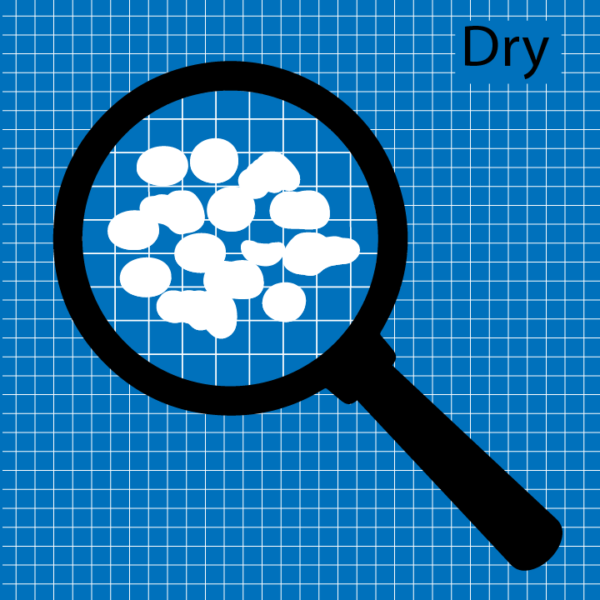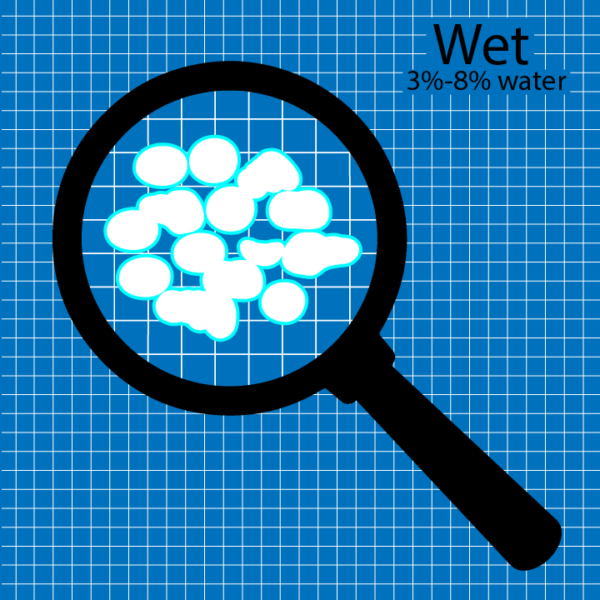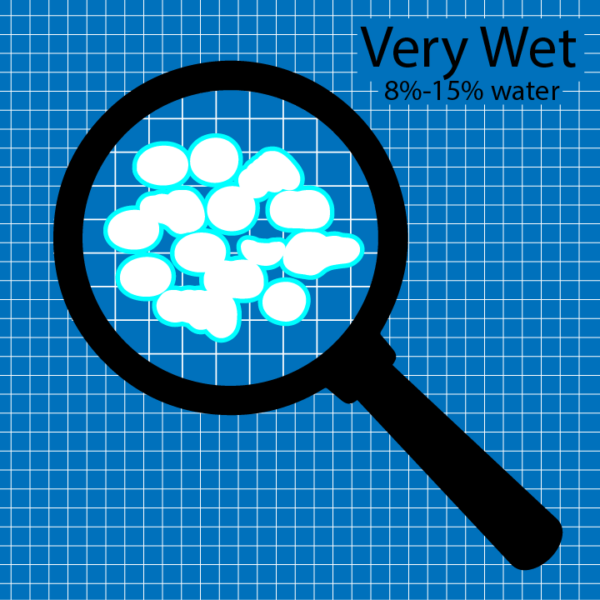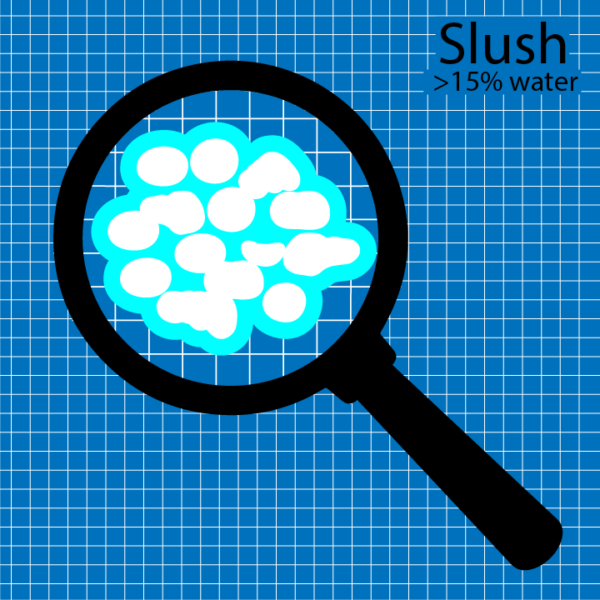The amount of liquid water in a unit of snow
Water content describes how much liquid water is contained in a unit or layer of snow. Practitioners have defined several phases of water content that illustrate the transition from ‘dry’ to ‘wet’ snow. These transitions are important because snow loses strength as its pore space approaches saturation with water, which has implications for wet avalanche activity.
- Dry: Dry snow has no liquid water in it and the snow temperature is below (or just up to) freezing. Loose grains of snow won’t clump together or form a snowball easily.
- Moist: Moist snow occurs as dry snow first becomes damp with a very small amount of liquid water (<3% water content). Water is not visible under 10x magnification. However, the added moisture causes the snow to clump easily into snowballs in your hand.
- Wet: Wet snow still easily forms snowballs or glops to skins, but now you can see water forming a meniscus between snow grains under 10x magnification. Porous space between snow grains is still occupied by free-moving air, rather than water (3% to 8% water content). Moderately squeezing the snow in your hands won’t press any water out.
- Very Wet: In Very Wet snow, meltwater is now saturating and flowing freely through the porous space between snow grains (8% to 15% water content). Water can be pressed out by moderately squeezing the snow in your hands. There are still minor amounts of air confined within pores.
- Slush: In Slush, the snow is flooded with water and contains a relatively small amount of air (>15% water content).




